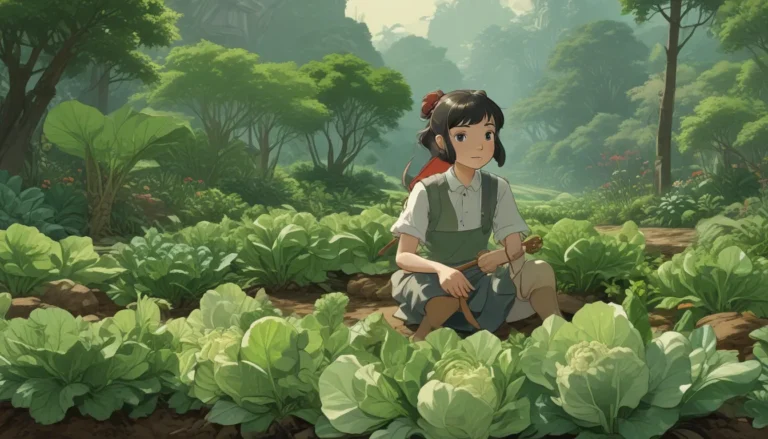The Ultimate Guide to Growing Chard: 9 Best Varieties for Your Garden

If you are on the lookout for a leafy green that not only adds a burst of nutrition to your diet but also elevates the visual appeal of your vegetable garden, chard is the perfect choice for you. Also known as Swiss chard, spinach beet, or silverbeet, chard is a member of the beet family that offers an abundance of fiber, protein, calcium, and iron per serving. It is rich in essential vitamins and minerals like vitamins A, C, and K, magnesium, and potassium.
Tired of the bitter taste of kale? Chard might just be the refreshing flavor you are looking for. With leaves that taste similar to spinach and stalks reminiscent of bok choy, chard is milder in taste and offers a delightful addition to your meals.
Before diving into the different chard varieties available for you to grow in your garden, let’s consider some key factors to keep in mind:
What to Consider Before Making a Selection
- Stalk and Leaf Color: Explore cultivars with stalks in yellow, orange, red, or green hues, paired with leaves in shades of green, bronze, or purple.
-
Leaf Texture: From soft and tender to thick and leathery, there is a range of leaf textures to choose from.
-
Time to Maturity: Depending on your preference for quick or gradual harvests, select a variety that aligns with your timeline.
- Pest Resistance: Keep in mind that certain chard varieties may be more prone to pests than others, so opt for varieties that suit your garden’s conditions.
Now that you are equipped with the necessary considerations, let’s delve into the top chard varieties that are sure to elevate your gardening experience.
The 9 Best Varieties of Chard for Your Garden
1. Barese
- Description: A white-stemmed heirloom variety with smooth, dark green leaves and a mild flavor.
- Growth: Quick-growing, reaching 9 inches tall at maturity with baby leaves ready for harvest in 25 days.
- Features: Pest-resistant and suitable for container gardening.
2. Bright Lights
- Description: Vibrant stems in an array of colors including yellow, orange, pink, and red.
- Growth: Matures in 55-60 days, growing up to 20 inches tall.
- Features: Ornamental value and tender leaves perfect for salads.
3. Fordhook Giant
- Description: Introduced in 1934, this mild-flavored cultivar features tender, savoyed leaves.
- Growth: Yields heavily in warm weather, maturing in 60 days.
- Features: Ideal for raw salads or cooked dishes.
4. Large White Ribbed
- Description: Heirloom variety with wide, flat white stems and tender leaves.
- Growth: Reaching 20 inches tall in 60 days.
- Features: Great addition to salads but may be susceptible to pests.
5. Lucullus
- Description: Named after a Roman emperor, Lucullus offers sweet, mild-flavored stalks.
- Growth: Matures in 52-55 days, reaching 20 inches tall.
- Features: Delicious leaves and stalks that store well.
6. Magenta Sunset
- Description: Show-stopping bright pink stems with mild-flavored leaves.
- Growth: Matures in 65 days, growing up to 24 inches tall.
- Features: Vibrant color for salads, may bolt in cool temperatures.
7. Orange Fantasia
- Description: Bright orange stems with deep green, savory leaves.
- Growth: Fully mature at 20 inches tall in 65 days.
- Features: Colorful addition to stir-fries, retains color when cooked.
8. Peppermint
- Description: White stems with reddish-pink hues, reminiscent of a Chioggia beet.
- Growth: Matures in 53-63 days, reaching 24 inches tall.
- Features: Wide, dark green, savoyed leaves with a robust flavor perfect for cooking.
9. Rhubarb
- Description: Dark green leaves with dark red veins and crimson flat stalks.
- Growth: Matures in 60 days, growing 20-24 inches tall.
- Features: Juicy, flavorful leaves suitable for salads or cooked dishes.
With a diverse range of chard varieties to choose from, you have the opportunity to create a vibrant and flavorful garden that suits your preferences. Whether you opt for a colorful display with Bright Lights or a savory addition with Fordhook Giant, the choice is yours to make.
Now that you are well-informed about the best chard varieties for your garden, it’s time to explore the wonders of growing your own fresh produce. Let’s make your gardening experience a fruitful and enriching journey.
Quick Tips for Growing Chard
- Planting: Sow seeds directly in well-drained soil with full sun exposure.
- Watering: Keep the soil consistently moist but not waterlogged to promote healthy growth.
- Harvesting: Begin harvesting outer leaves once plants reach a mature size, allowing for continuous regrowth.
By following these basic guidelines, you can nurture your chard plants to thrive and provide you with a bountiful harvest. Enjoy the process of gardening and relish the satisfaction of growing your own nutritious greens at home.
Have you tried growing chard in your garden before? What were your favorite varieties and how did they perform in your growing zone? Share your experiences and insights in the comments below to help fellow gardeners on their chard-growing journey.
If you’re interested in exploring other leafy greens for your garden, check out our detailed guides on growing spinach, harvesting beets, and cultivating collard greens for a diverse culinary experience. Happy gardening!





